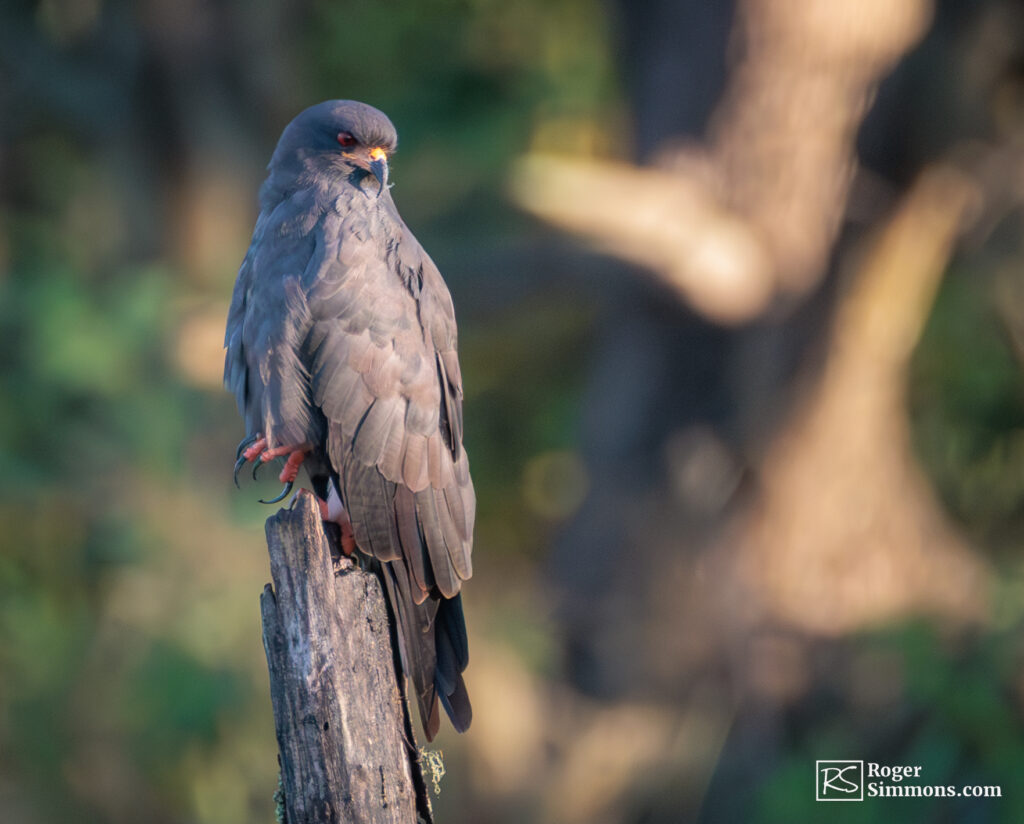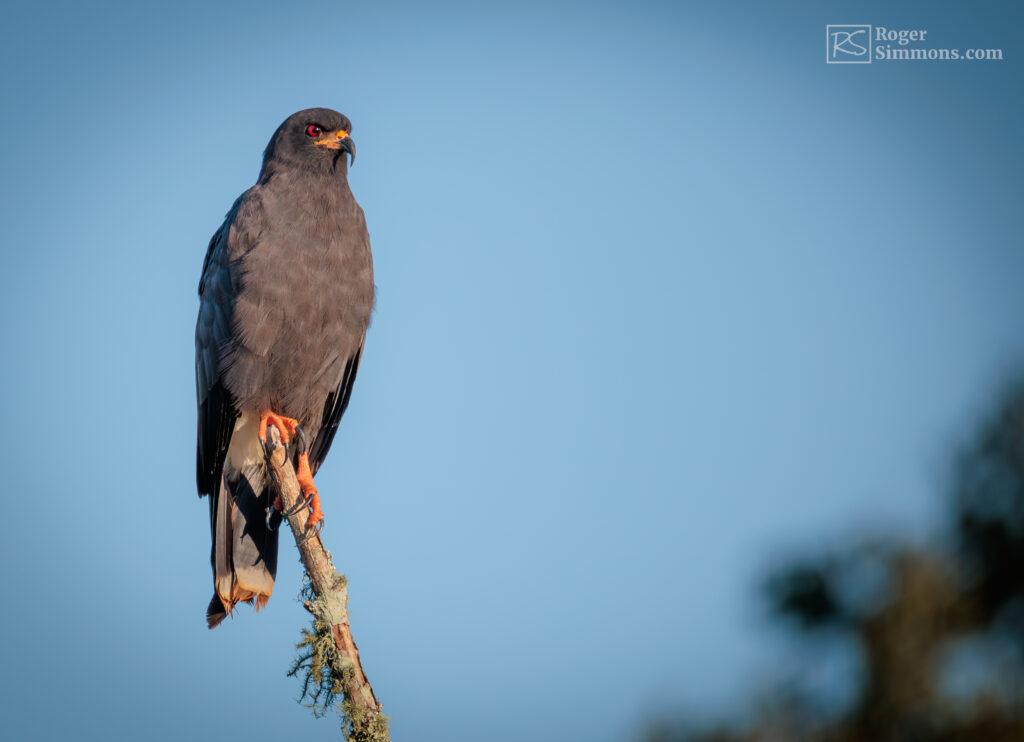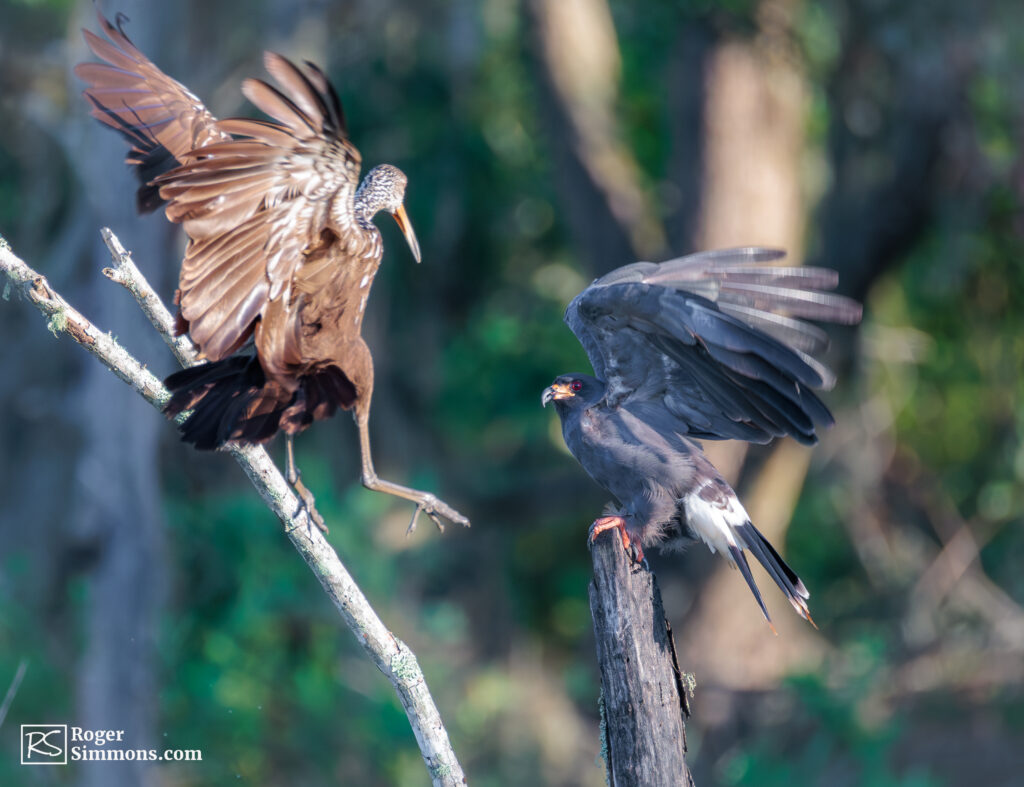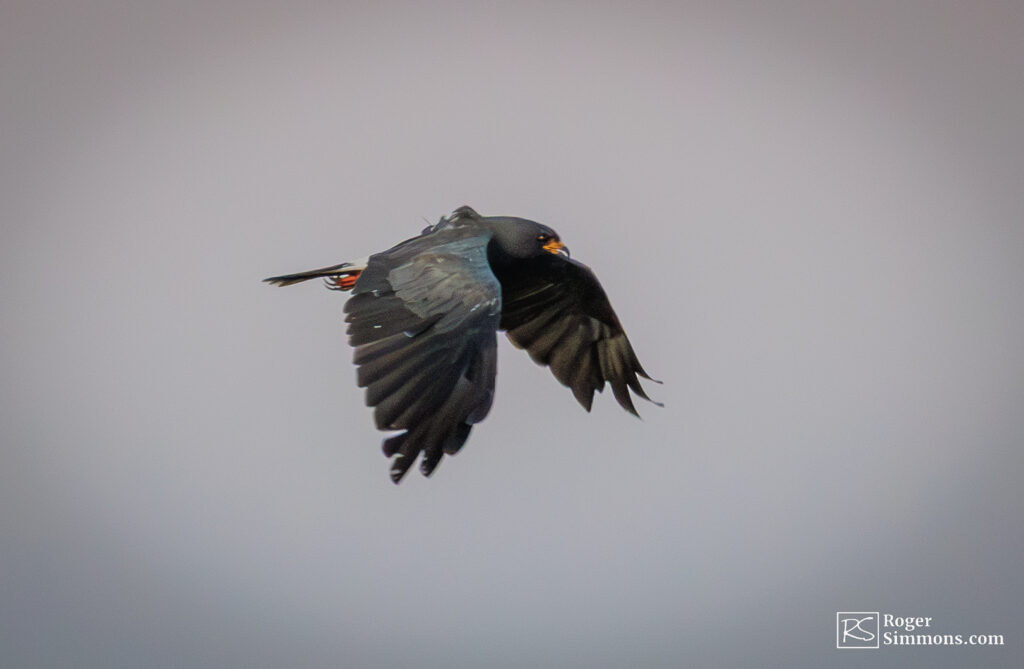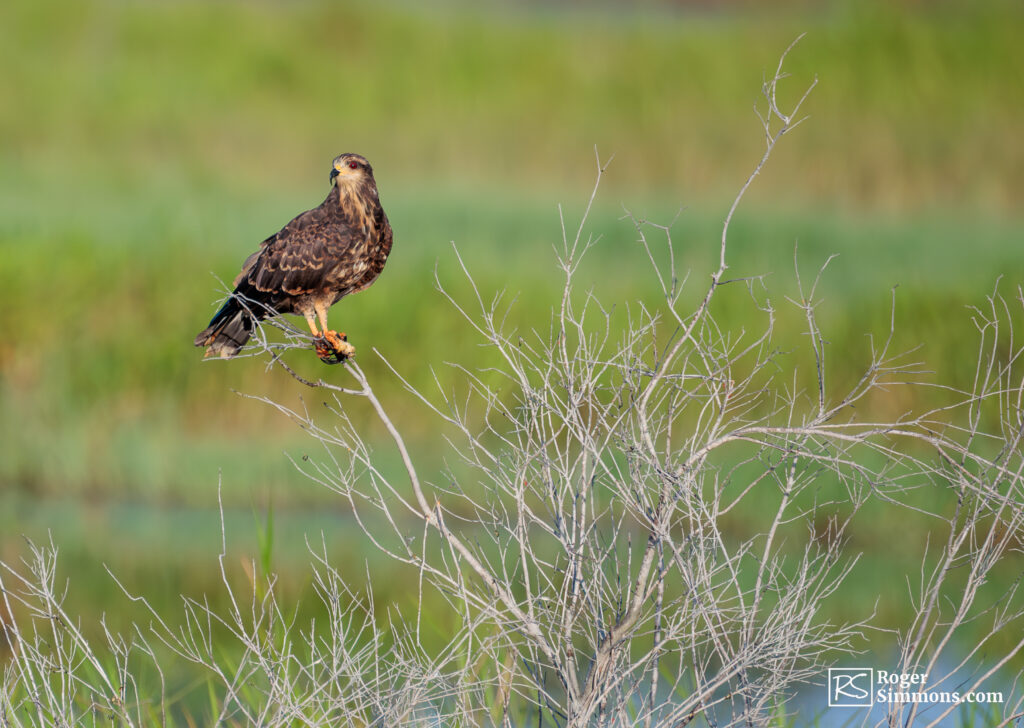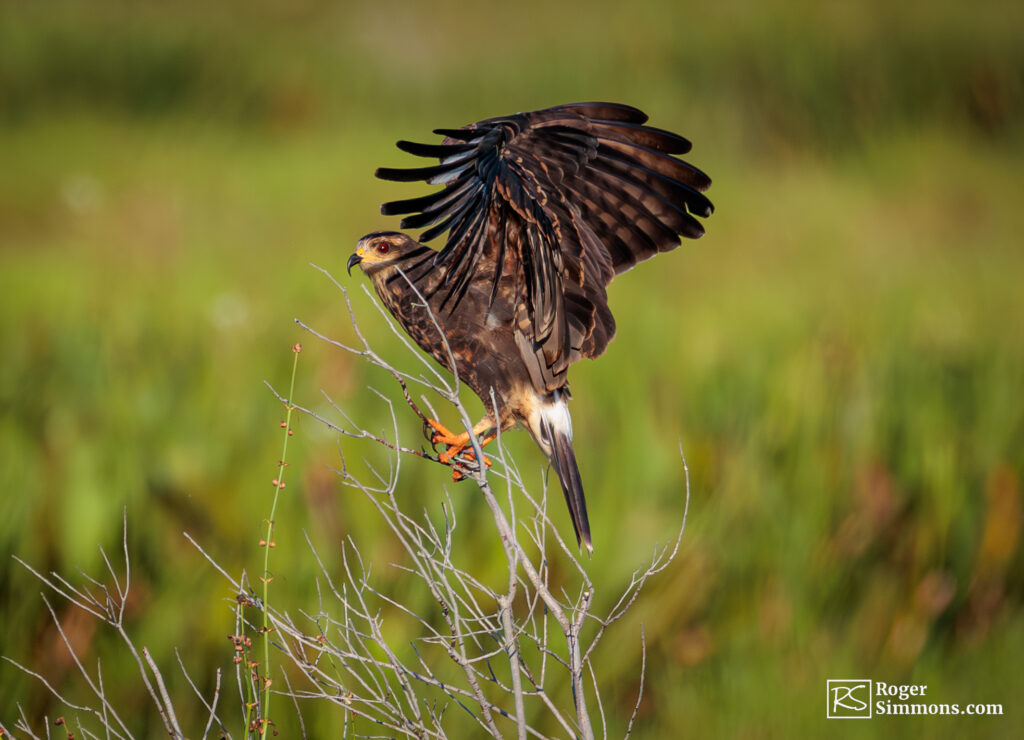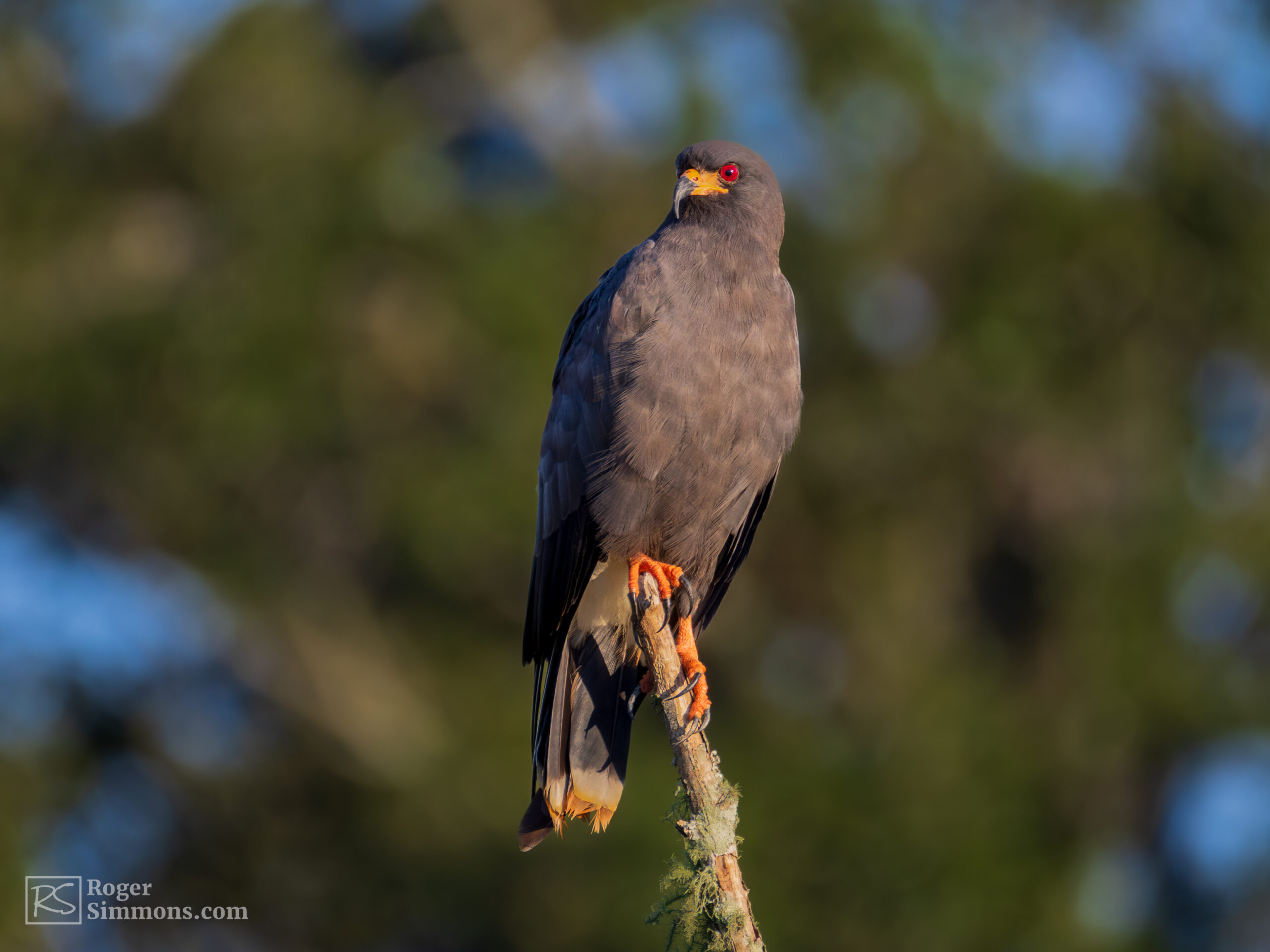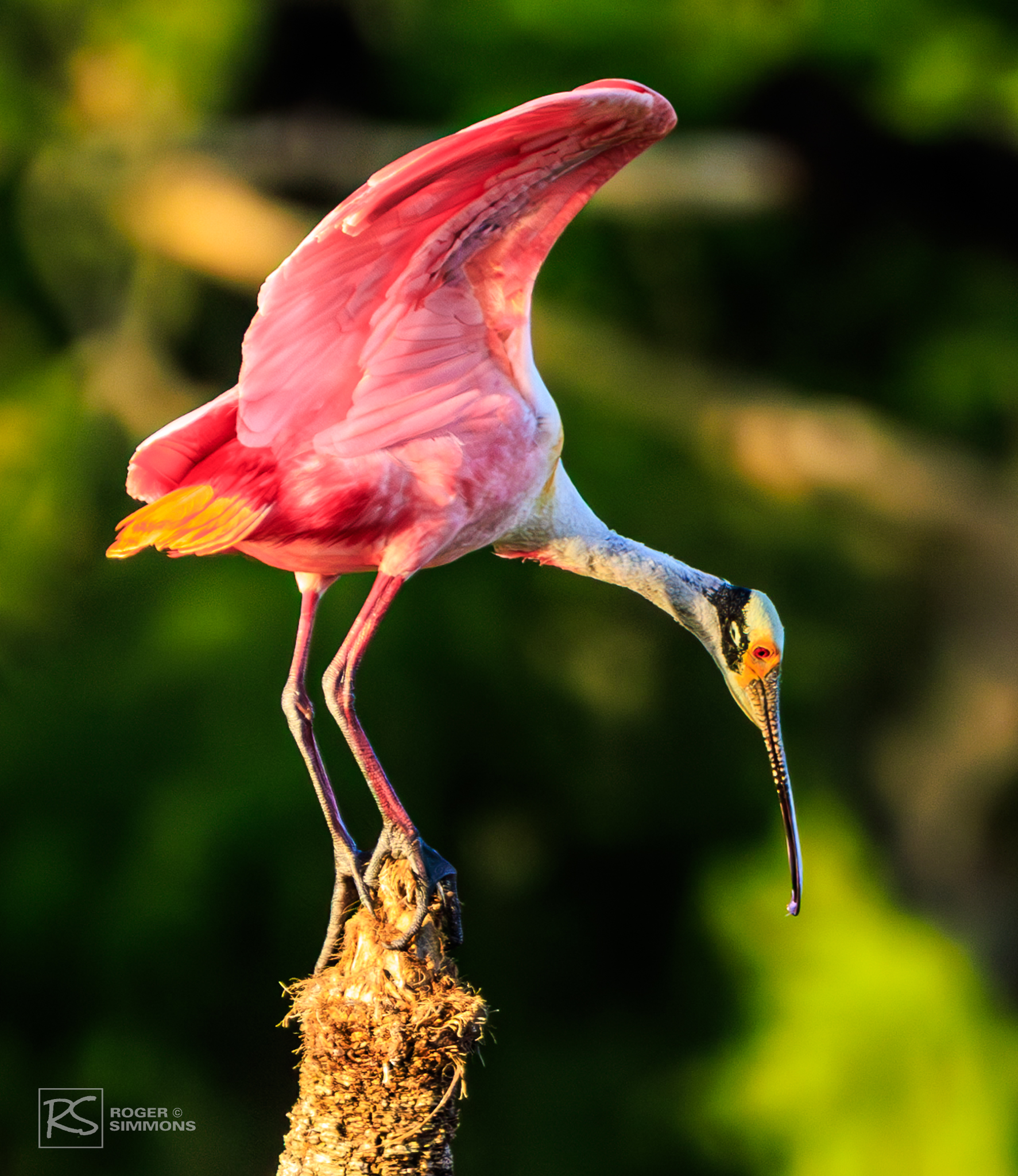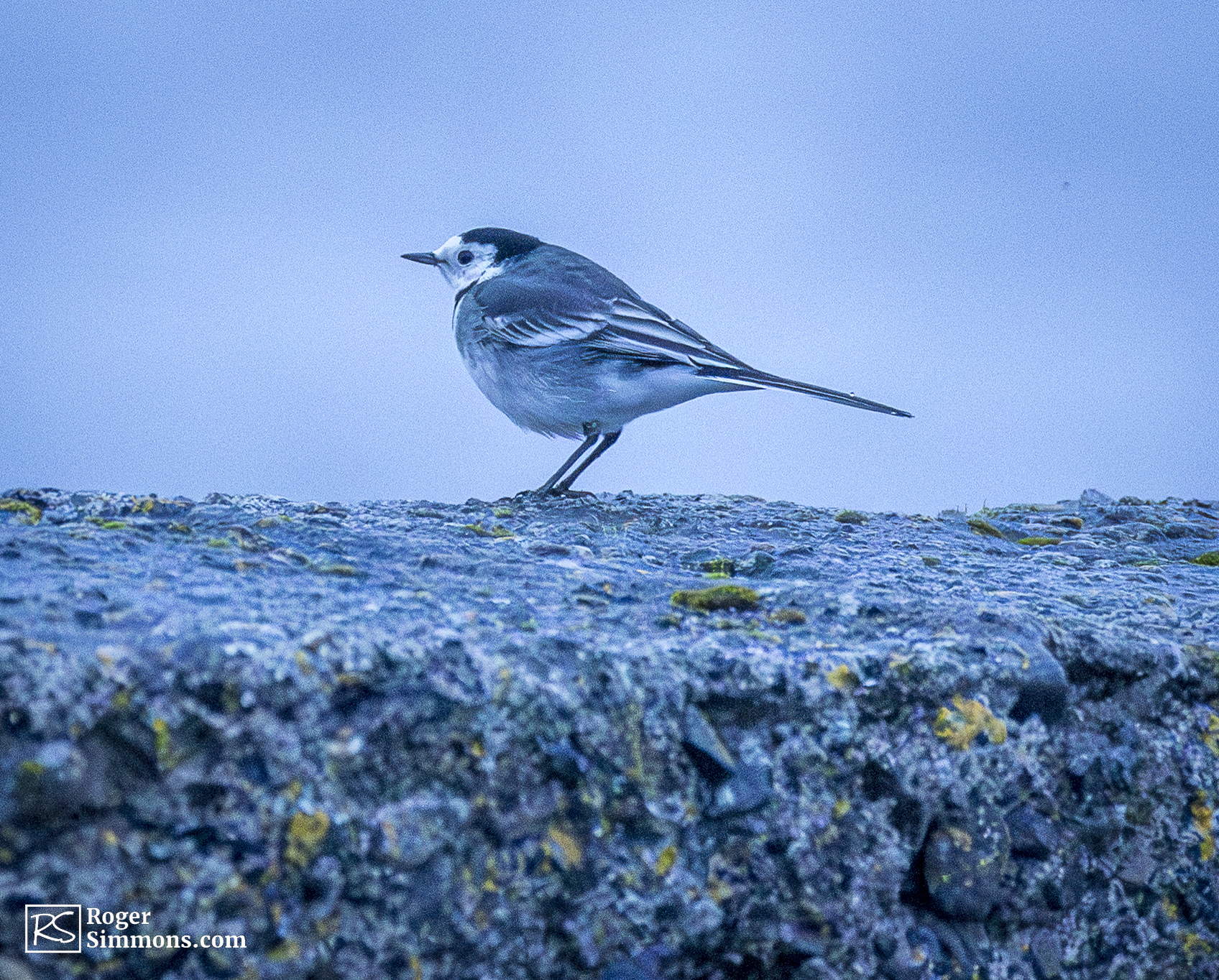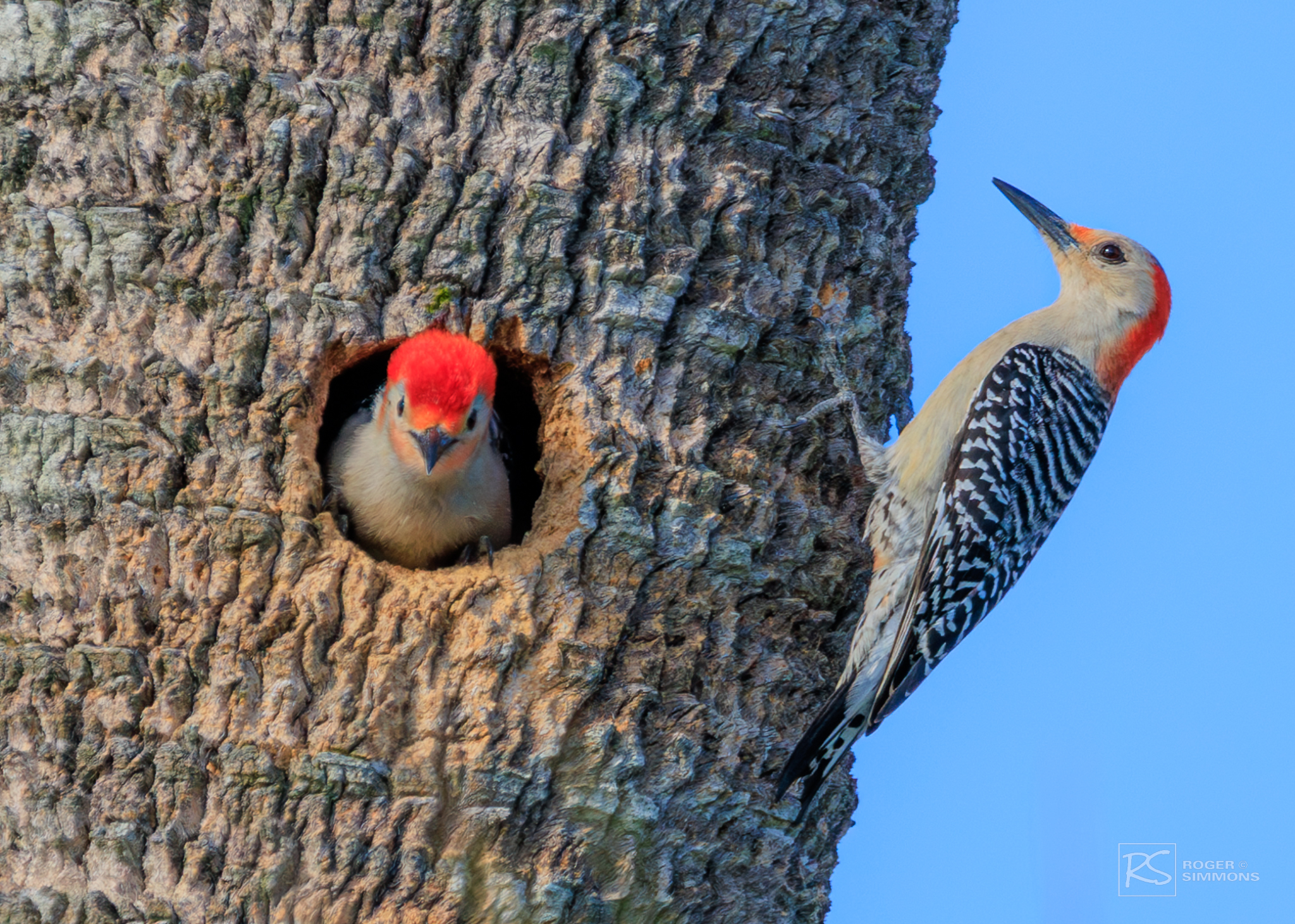I was excited to finally see and photograph some Snail Kites in Osceola County this past weekend, but there was a twinge of disappointment. They were all female kites, and I really wanted to see some male kites, too.
That’s because, like many bird species, female and male Snail Kites look remarkably different. While the females are mostly dark brown with white eyebrows, the males are mostly dark gray with white highlights.
After checking a couple of different spots in Osceola County and coming up empty, I made a pre-sunrise trek to Twin Oaks Conservation Area near Kissimmee. When it was still dark, I saw a male Snail Kite fly over Lake Tohopekaliga. That was a good sign.
Eventually, after the sun was out, I was able to track down a male Snail Kite — along with some females — at Twin Oaks. The male kite perched himself for my portraits and even moved to a slightly different location after being startled by a Limpkin.
The nearby females were busy feasting on snails from the marshy area, but the male just sat and watched. Hopefully I’ll get a shot of a male flying with an Apple Snail in its talons. These birds are fun to watch!
Here’s some more information about the endangered Snail Kites from the Florida Fish and Wildlife Conservation Commission:
- The Snail Kites’ traditional range is the Everglades north to larger lakes from Lake Okeechobee to Lake Tohopekaliga in Osceola. During times of drought, they may be seen at smaller lakes and marshes in South and Central Florida.
- Snail kites nest during February to August in Florida. During the nonbreeding season, kites may form large communal roosts in both cattail and willow stands where they can be seen flying into the site 1-2 hours before sunset.
- It is along the margins of Lakes Okeechobee, Kissimmee and Tohopekaliga where most boaters or anglers may see a snail kite and where kites are most vulnerable to human disturbance.
